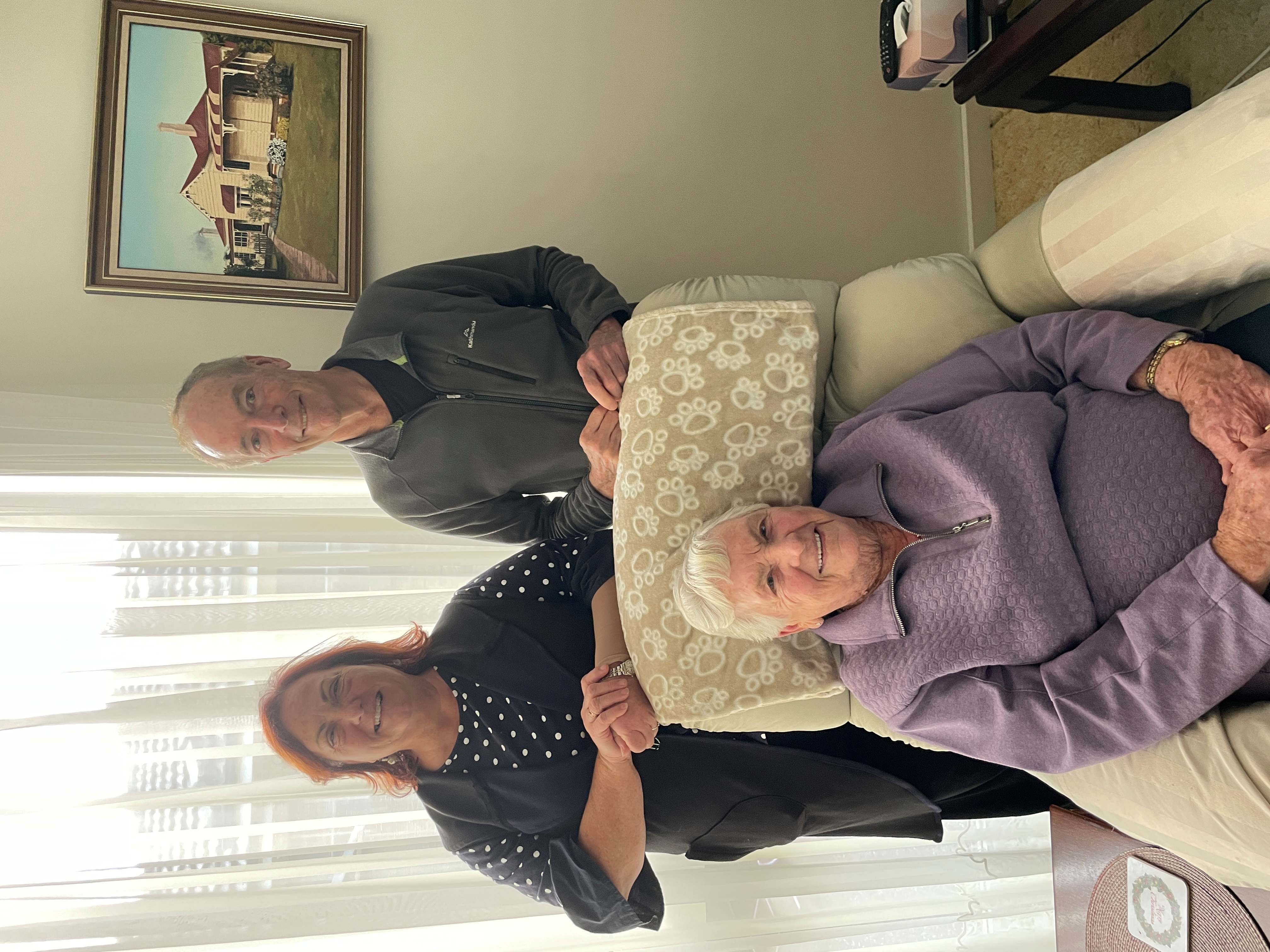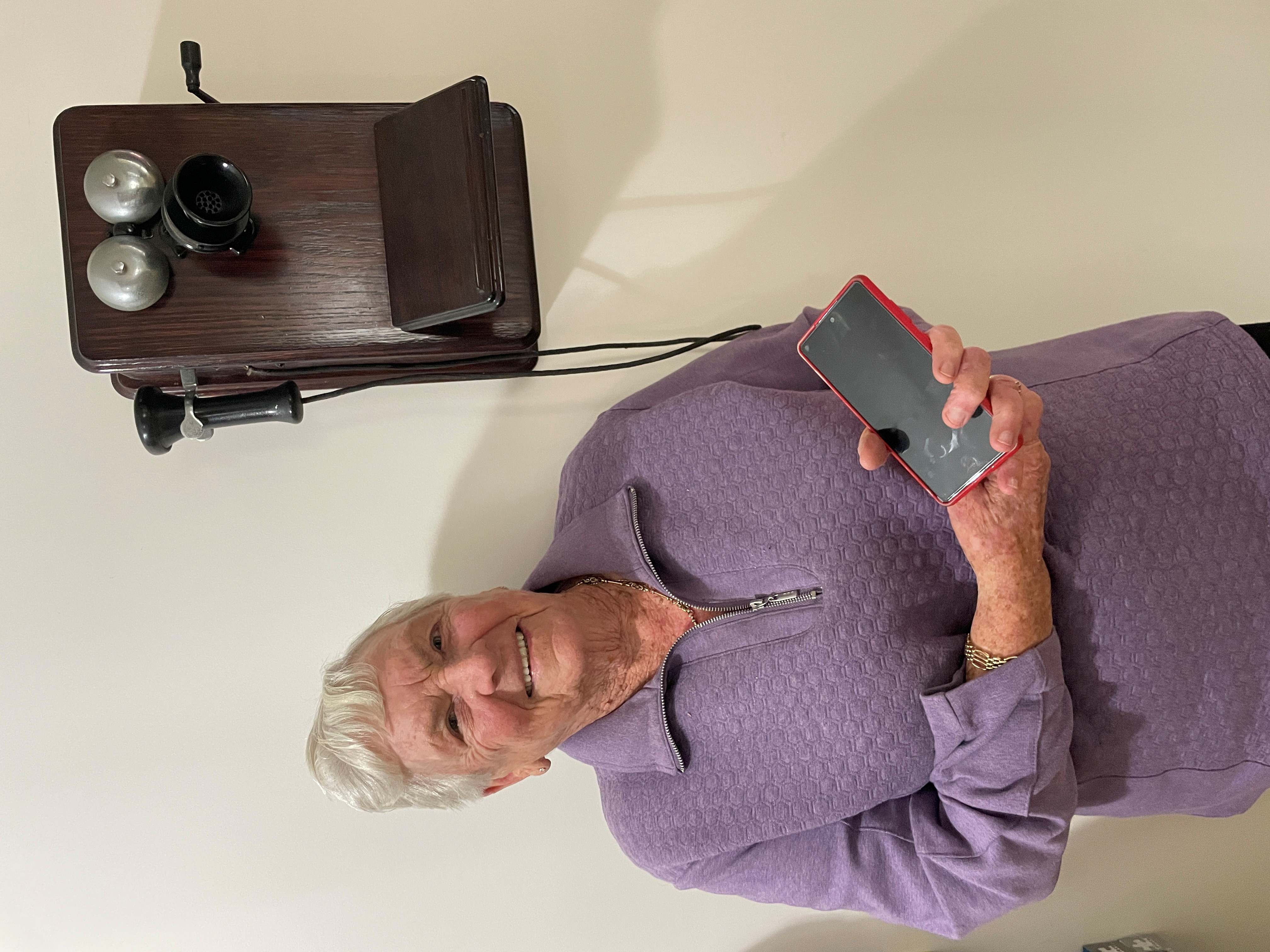When Beryl Hammond (nee Walker) was invited to a women’s gala day recently at Gerringong Golf Club it was a trip down memory lane.
The golf course land was once home to her family’s farm – Beachlands – and Beryl would roam the course’s green hills as a child, sometimes on foot sometimes on horseback.
When the 95-year-old returned to the course, her mode of transport was a little more comfortable.
“They made such a fuss of me, they took me around in the golf cart,” grinned Beryl.
The youngest of five children, Beryl had an idyllic but busy childhood where it was all hands on deck to help her parents Robert and Jessie Walker run the farm.
Everyone pitched in to work the land purchased by the family in 1909, before it was sold to Kiama Council in 1978 and bought by Gerringong Golf Club in 1981.
Local farmers with tractors and slashers, including Beryl’s brother Keith who still lived on a parcel of the Walker land, created a nine-hole golf course. By 1985, with interest in golf growing significantly, the club spent the next five years constructing the back nine.
Beryl is the last surviving member of her family and Gerringong Golf Course holds a special place in her heart. So, she was more than happy to revisit the steep slopes of the hills where she grew up.
And even happier to be in a golf cart, rather than on a horse. Beryl was just six when she learned to ride.
“That was my job, I learned to ride very early so I could go down and bring the other horses in for the day,” she recalls. “I also collected the eggs, fed the chooks and the poddy cows.”
Beryl, who was born in 1929, said all the children had “jobs to do” before and after school.
“In the early days, we didn’t have milking machines,” recalls Beryl. “We had to hand-milk about 60 cows twice a day. We were all five when we were given a special cow to learn to milk on; except for my sister Sylvia. She never milked I still wonder how she got out of it.”
Beryl says despite the early starts farm life was “wonderful”.
“When you were milking the cows, you looked out and you could see the sea and the ships going by,” she recalls.
“We were very lucky, we would get dropped off at the school on the way to the milk factory. There was no bitumen roads in those days, it was all red dirt and we would ride in the horse and cart that carried the milk cans to the factory.”
The transition to high school – the closest was in Nowra – left little time for farm chores. Beryl and her siblings would ride their bikes to Gerringong train station to catch the pick-up train coming from Sydney to Bomaderry, followed by a bus to Nowra High.
“They used to call the train carriages dog boxes, there would be one for the girls and one for the boys,” she says.
“Coming home, we did the same but some afternoons we’d be very late because (the train) would have to stop in Berry and shunt off to pick up the cows that had been sold that day and take them to Sydney.
“Then we would ride our bikes home in the dark. We lived a very quiet life because we were always working.”
The farm did have a telephone, and Beryl has seen some significant changes since the 1930s wall-mounted oak box was installed at Beachlands.
The now antique phone takes pride of place on a wall in Beryl’s Balgownie home as a reminder of the farm, her history, and the technological advancements she has seen across the decades.
“We were the 36th family in Gerringong to get a telephone,” says Beryl proudly. “It wasn’t a party line where everyone was on the phone at the same time, we were on the exchange.”
“So you were high-tech,” laughs Bruce.
“Yes, yes apparently,” says Beryl.

Rosyln and Bruce are quick to point out Beryl is a whiz on her mobile phone and stays in touch with her family – which includes 11 grandchildren and 10 great-grandchildren – using Messenger, WhatsApp and Facebook.
As Beryl recalls the technological advances she has seen over the years, one of her grandchildren pops in to say hi and grab a bite to eat during a break from work.
He’s in his early 30s, more than a decade older than Beryl when she left Gerringong in the late 1940s to pursue a nursing career at Sydney’s Royal Prince Alfred Hospital.
She loved her job and from the age of 19 spent several years at RPA before she stopped working when she married her husband, police officer Albert (Bert) Hammond.
“I had to stop nursing because I got married, thank goodness those times have changed,” says Beryl, referring to the enforced retirement of young nurses.
Early in their marriage Beryl and Bert, who went on to have four children, moved to Barellan where Bert was posted as the small town’s only police officer.

“It was a long way from the beach, and it was so hot and dry and the dust storms, I’d never seen anything like it,” recalls Beryl.
“Mum used to put newspaper on the windows to seal the windows,” says Beryl’s oldest child Bruce.
Despite the heat and the dust, the Hammonds quickly became an integral part of the rural community – home to tennis legend Evonne Goolagong.
“We had a lot to do with the Goolagongs,” says Beryl. “Evonne called me her sparring partner, I was the second-best tennis player in Barellan.”
Beryl, who only stopped playing tennis in her 80s, is also a life member of the original Gerringong Hockey Club and still plays bowls. She credits sport with keeping her young.
A keen golfer in her earlier years, Beryl has never played the Gerringong course despite knowing the lay of the land like the back of her hand and was able to share a wealth of knowledge with the club about the land and the course that her brother Keith helped to build.
During a recent course reconstruction, the club’s greenkeeper found a well under the 15th green.
“I remember that well was used to feed the water down to the cattle troughs,” says Beryl.
The 18-hole course, while considered challenging, is nowhere near as difficult as when Beryl traversed the land on her horse as a six-year-old.







